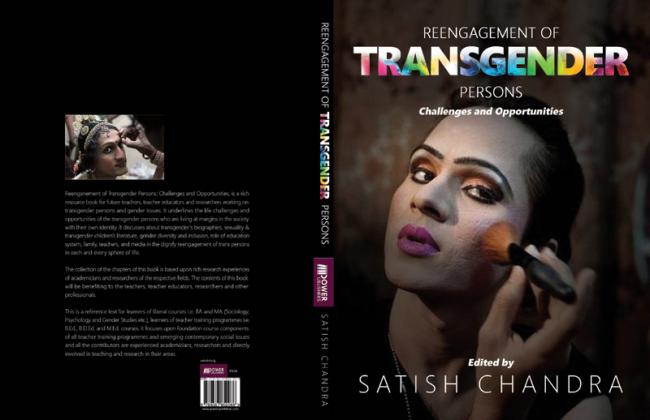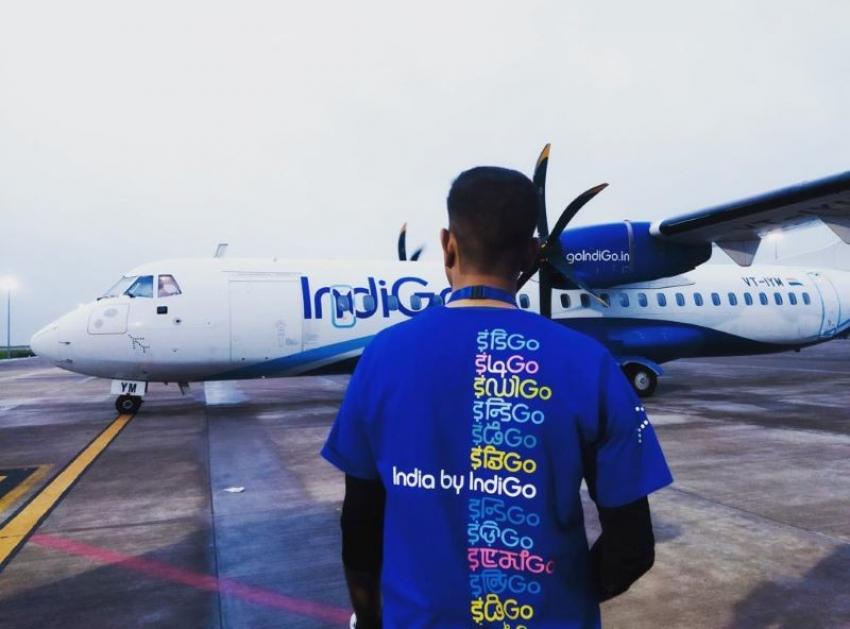NITN | @notintownlive | 16 May 2018, 12:30 pm

'Reengagement of Transgender Persons: Challenges and Opportunities', edited by Satish Chandra, is a book which deals with an understanding of other sexes -- transgender, lesbian, bisexual, gay and others.
The first part of the book, written by Satish Chandra, consists of a scientific approach towards the subject, explaining things such as chromosomal combinations and the physiology as well as psychology of the LGBT community.
It then throws light on how the LGCT community faces problems every day due to the narrow-mindedness or rather wrong concepts harboured by society at large.
Being a LGBT is as normal as being a male or female, there is nothing special or wrong about it and people need to understand this as a matter of fact.
Indian constitution has legalized other genders and this has been a big step to empower them but we must also keep in mind that they are still lagging behind in 60% of the other aspects of the society.
They still are not accepted by the society. Psychologically they are subjected to stress, anxiety and frustration. They are disrespected and mocked by the society. Economically they are not having adequate employment opportunities which forces them into begging and becoming sex workers.
Unfortunately and shamefully even education is denied to them. Then the education policies have been jotted down persistent in india since independence and their terms which clearly say that a member of any gender, culture or section of a society is to be given education.
But still we see that there have been very few efforts made to social, economic and educational empowerment of the transgenders.
Satish Chandra lastly discusses about the reengagement of these people and concludes the first part of the book.
The next part is by Budhiswatya Sharkar Das who again throws light on the concept of gender, gender roles and our perception of gender.
He lists different types of genders and that is the point where we realize that there is so much more than just male and female sexes.
Then he discusses about the psychosocial problems that the transgender people have to face, we come to see that in every part and aspect of their life they have to face problems and most of these problems arise due to the unscientific and narrow-minded thinking of the backward society.
Here for the first time we come across the term ‘transphobia’, which is another such act by the society which I find no justification for, whatever it is.
Then we also come across marriage related issues, we see that their marriage also faces complex issues like any other heterosexual marriage.
The next part of the book is written by Sonali Ghosh, who basically does a comparative study of transgenders in India and Japan.
She introduces the terms and then throws light on the historical contexts of the ancient Indian texts where we come about some interesting facts and stories.
Then she has written about the British Acts on Hijras.
Next we come to the history of transgenders in Japan and their discrimination where we see the crimes against them and the way they are treated.
The author then continues with the role of transgender in movies and events related to them in Bollywood in a very detailed way, also talking about the transgender celebs in Japan.
The next authors are Dr. Anil Kumar Panda and Neha Mishra who talk about role of teachers in gender inclusive classrooms.
They go into the details of the contemporary scenario of the transgender in India and the gender equality, equity and human rights which is much denied to them.
They then list specific teaching strategies to promote gender inclusive classrooms and conclude the topic with a try to broaden our minds by saying how normal it is to be unique.
The next author is Dr. G Anbagalan where he talks about the access to higher education by the transgender people.
He writes about the solution for inclusiveness of the trans people in education through open and distance learning system.
He has also made a study of IGNOU university, which gives free education to transgenders.
Then he lists down 30 strategies for mainstreaming transgenders.
The next part is written by Monica Chahar and Jaita Mondal who discuss the educational status of transgenders.
They start with an apt quote which makes the difference between sex, gender and sexuality very clear to us.
They have written about the need of gender neutral language in teaching and the need for trans people to be included in social and cultural participations for them to have access to education, health care and public places.
They then discuss the problems and challenges for transgender education and also give a list of effective solutions.
Dr. C Thanavathi is the next author who discusses a very important and major topic, which is the role of social media in empowering and supporting transgender in higher education.
The author shows the close connection of transgender and social media.
The next authors are Siddhi Sood and Dr. Arti Shakya who discuss the challenges in teacher training on gender diversity and inclusion.
They have clearly and vividly written about gender inclusive classrooms, the framework for gender inclusive schools, gender identity and expression and how to deal with the parents and other students.
They conclude with a list of suggestions to overcome the challenges and future trends.
The next part is written by Dr. Razia Begum Laskar who talks about transgender child and the kind of education and acceptance they need.
She broadens the aspect to the problems in national and international scenario.
She interestingly draws a relation and shows the connection between sexuality and children’s literature and its effect on children.
The next authors are Dr. Bimal Charan Swain and Dr. Rajalaxmi Das, who throw light on the status and representation of the transgender persons in Indian society.
They mainly talk about trans people in India, their constitutional rights, the problems faced by them and the welfare programmes for trans people in India. In this part, for the first time in the book, we come across details of repression of trans people.
The next author is Dr. Hayal Koksal who discusses the importance of teacher training programs for a better world, elucidates on this topic and justifies that why we need to focus on LGBT+ issues.
He has discussed about hate crimes and murders, and attitude towards LGBT+ students in school.
The next author is Dr. J Maria Prema who talks about the role of teachers, family and media for the ‘inequality’ on gender. It is an important part as it deals with inequality at different places in gender and their discrimination.
It discusses in details the causes of inequality of gender in india and the types of gender inequalities.
Overall I found the book very informative about transgenders. It is important to speak about such topics which are a taboo in a society because there are human beings suffering for our narrow-mindedness.
The book must be read by everyone to broaden their outlook and understand the topic in hand scientifically
Also it helps us understand the problems of other genders and sympathise with them.
Hopefully, this book will bring a change in society and be successful in its cause.
(Reviewed by Soumashree Mukherjee)
- Birbhum: Sitaramdas Omkarnath Chair at Biswa Bangla Biswavidyalay
- Rotary Club of Calcutta East Central celebrates centenary of iconic actor Santosh Dutta with statue unveiling
- Shiny things by Jinia: A luxury evolution by visionary entrepreneur, healer
- Mystique and Memories: Wiccan Brigade hosts its first Halloween Fest in Kolkata
- Rotary Club of Calcutta Samaritans hosts three-day youth leadership awards program for tribal students in Bakura
- Rotary Club, South Kolkata Vision inaugurate newly developed children's park in Sonarpur
- Akhil Bharat Jaiguru Sampradaya and Omkarnath Mission volunteers care for terminally ill patients at Mahamilan Math hospice
- Bengali couple promoting Indian music and culture among young Americans
- Indi Setu: Wildlife on the Brink: Can We Rewild a Warming World?
- Durga Puja sustainability: One of the oldest awards goes flex-free
Air Canada has introduced a new non-stop route connecting Toronto with Rio de Janeiro, with the first flight landing in the Brazilian city on Friday morning.
Air India, India’s leading global airline, and Maldivian, the national airline of the Maldives, have entered a bilateral interline partnership aimed at boosting connectivity between the two countries.
IndiGo, India’s largest airline, is grappling with one of its most severe operational crises in recent years, with widespread flight delays and cancellations disrupting travel across the country for a second consecutive day.





